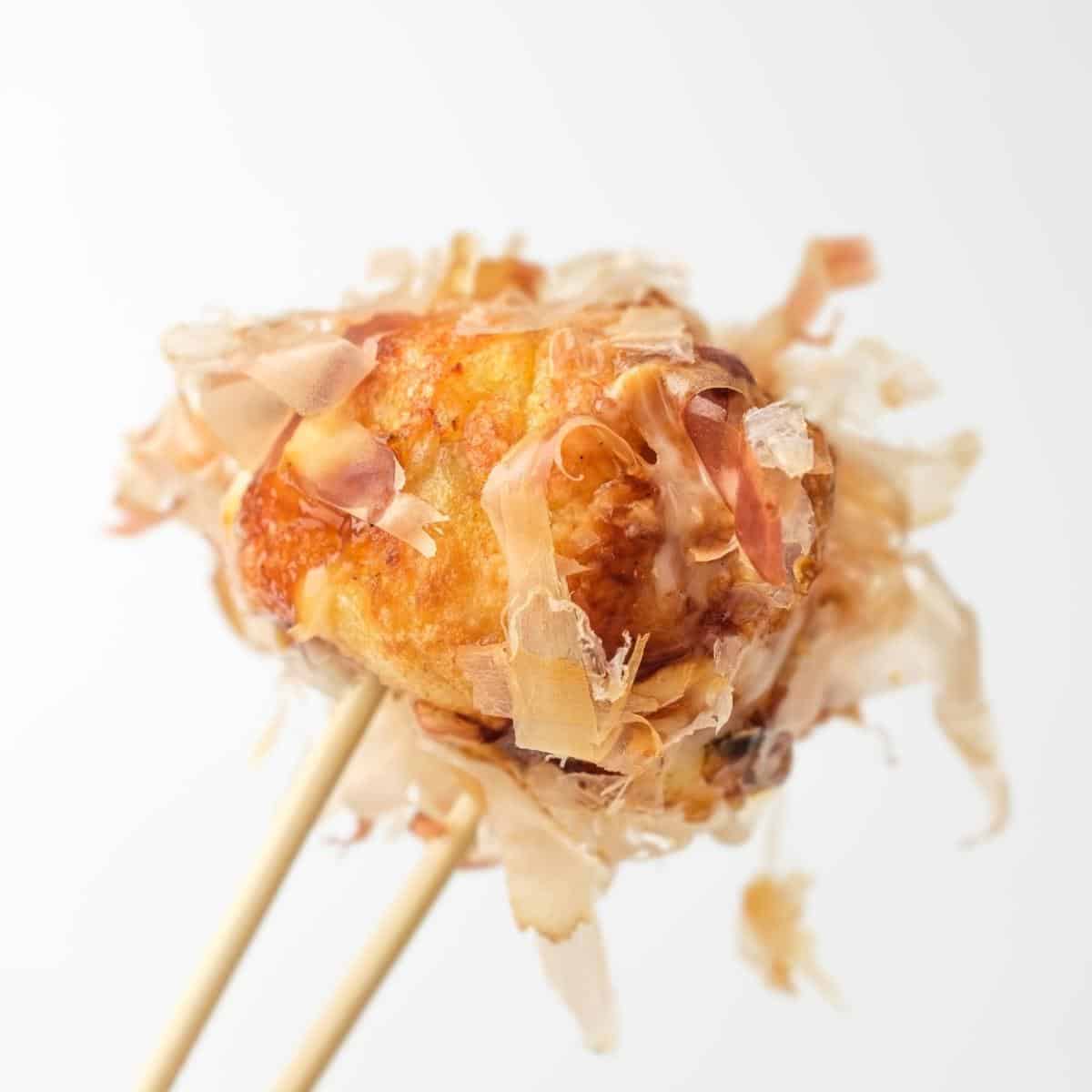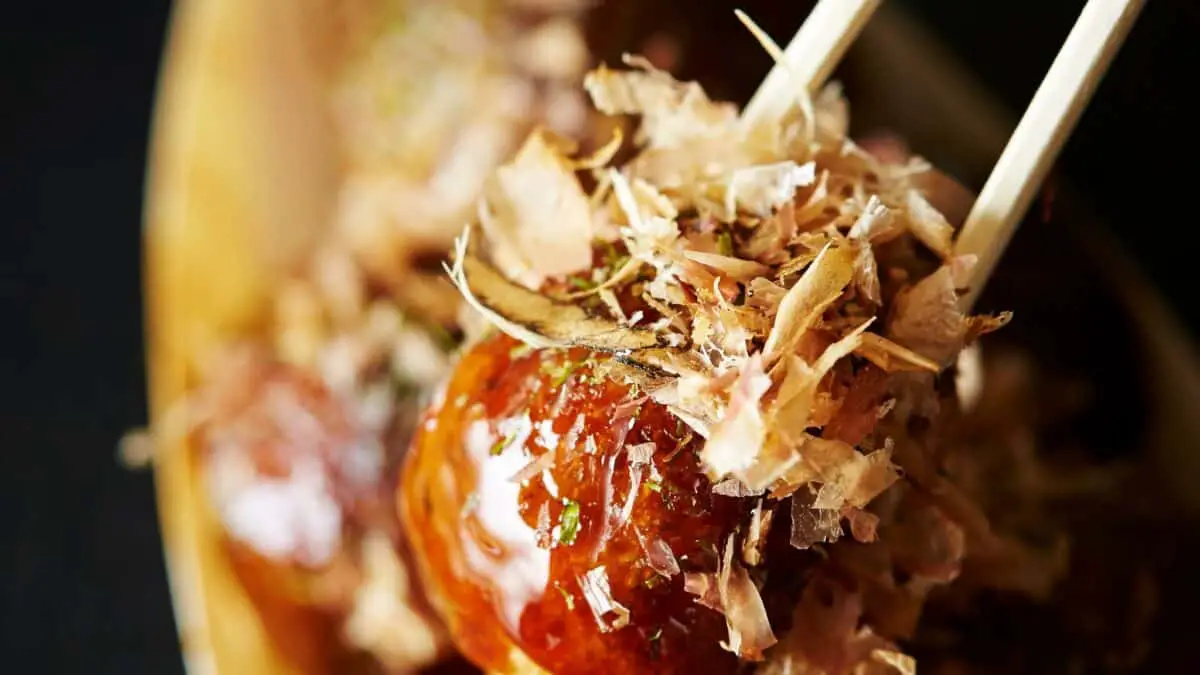Why Is My Takoyaki Moving? [Hint: Bonito + Heat]
If you have ever come across takoyaki, then you may also have the same question about this super delicious Japanese treat.
The bonito flakes make your takoyaki look like it is moving. Those fish shavings are so paper-thin that they dance on top of your takoyaki due to the contact with the hot surface of the balls. The rising heat causes them to dance.

Lindsay Anderson filmed her takoyaki dancing bonito experience and decided to post it on Youtube:
There is no need to sweat about it. We assure you that there isn’t anything yucky or squeamish about it. This is why we have created this post.

Check out our new cookbook
Bitemybun's family recipes with complete meal planner and recipe guide.
Try it out for free with Kindle Unlimited:
Read for freeIn this post we'll cover:
What is takoyaki?
Takoyaki is Japanese seafood that has an octopus as the main filling. It also includes dried laver, Japanese mayonnaise, takoyaki sauce, green onion, pickled ginger, tempura leftovers, and bonito flakes.
If you want to learn everything, there is to know about these octopus balls, you should read the post I’ve written about takoyaki and its recipe.
Why do they move?
It is very beautiful to see them move or “dance” on top of the takoyaki. Most people think that it is something that is still alive.
The thing is, bonito flakes are nothing but thinly shaved shreds of dehydrated fish.
When these finely shredded flakes of fish meat come in contact with hot steamy food, the layers of the shreds start rehydrating in different directions, and that too at different rates.
This is because the shreds differ in thickness which makes for different moisture uptake.
So, you will see the bonito flakes moving continuously in different directions on top of the food until they are completely soaked in moisture.
How are bonito flakes made?
Bonito flakes are one of the primary toppings in takoyaki. Moreover, they’re also used as toppings on okonomiyaki, which is another Japanese delicacy.
Bonito flakes may seem strange to those who haven’t seen or tasted them before. It can be an odd sight at first for many foodies trying Japanese cuisine with bonito flakes as toppings.
We can assure you that bonito flakes aren’t alive. They move just because of their light and thin structure. Since bonito flakes are used as toppings, they’re only introduced to the food after it is cooked.
Bonito is often added to these furikake seasoning mixes to add a bit of crunch and saltiness to Japanese dishes.
The hot and steamy food makes the flakes absorb moisture. So they move in the direction of least resistance.
The flakes are made using dried bonito fish. The bonito fish is grated into thin flakes.
Directions:
- Fresh bonito fish is cleaned and cut into 3 pieces: left side, right side, and the spine. From each fish, 4 pieces of “fushi” are made. “Fushi” is a term for the dried bonito piece.
- Once the pieces are cut, fushi is placed into a basket. They’re arranged properly inside the boiling basket. Each piece will be placed in a way that they get boiled the best way. If the pieces aren’t boiled perfectly, your bonito flakes get ruined.
- The boiling basket is placed into hot boiling water. The pieces are boiled for 1.5-2.5 hours at 75-98° C. The boiling time can differ depending on the quality, size, and freshness of the bonito fish. Attaining the right boiling temperature and time takes years of experience.
- Once the pieces are boiled perfectly, small bones from the flesh are removed using special tweezers (small tongs).
- The pieces are set aside to drain excess water. Next, they’re smoked using oak or cherry blossom.
- Unwanted skin, pieces, fat, etc. are removed from the bonito pieces before they’re put under the sun for 2-3 days and baked. The whole process is repeated a couple of times.
- At last, the pieces are shaved and shredded into flakes.
Don’t freak out about bonito flakes moving
The next time you order takoyaki, don’t freak out. While it might look like the bonito flakes are alive and moving, it’s just reacting to the heat from the takoyaki. So you’re not eating anything that’s still alive!
If you think you might want to try to make takoyaki yourself now, check out my post on the best takoyaki makers you can buy online. It’s certainly fun to see what the Japanese have come up with to make their balls :)
Check out our new cookbook
Bitemybun's family recipes with complete meal planner and recipe guide.
Try it out for free with Kindle Unlimited:
Read for freeJoost Nusselder, the founder of Bite My Bun is a content marketer, dad and loves trying out new food with Japanese food at the heart of his passion, and together with his team he's been creating in-depth blog articles since 2016 to help loyal readers with recipes and cooking tips.
